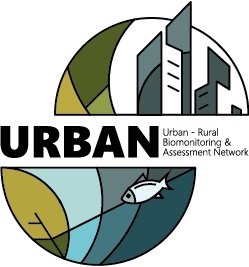

Become an URBAN volunteer! URBAN will monitor water quality and use biological indicators to represent water quality in streams and wetlands of the Hamilton region. Continuous water quality monitoring is essential in detecting potential threats to one of the world’s greatest fresh water resources, the Laurentian Great Lakes.
The Wetland Macrophyte Index (WMI) links the presence of certain groups of plants to the degree of human disturbance and assigns a low score (1 or 2) to certain plant taxa that are tolerant of high levels of human disturbance, and a high score (4 or 5) to taxa that are intolerant of human disturbance. The WMI score can range from 1 (highly disturbed) to 5 (pristine), and in practice, a score greater than 3.25 indicates good wetland conditions. As is the case for the WQI, WMI scores can be treated statistically, and used by environmental agencies to determine if the water-quality conditions in a wetland have changed significantly through time. Alternately, managers can monitor a number of wetlands at one time and compare their quality across the basin.
Compared to the cost and time required to measure water quality directly, surveying vegetation is fast and inexpensive. Even compare with other biomonitoring protocols that use fish or aquatic invertebrates, a plant-based protocol has an advantage because it takes only one field visit per year, when most aquatic plants have flowered (late July to early September), and it seldom takes more than 3 or 4 hours (usually less than 2 hours) to complete a survey, even in a very high-quality site with a diverse assemblage of wetland plants. There is no need to account for seasonality as is the case for fish and invertebrates, and there is no need to have any specialized equipment such as traps or nets. All the equipment required is a canoe, waders, and a garden rake, and an acceptable level of competence in identifying aquatic plants. Tests have confirmed that a WMI score that is representative of a site does not require all species of rare plants to be located and identified. In other words, even if only 60-70% of all plant taxa were identified for a particular site, an accurate WMI score would be generated (see VAPS).